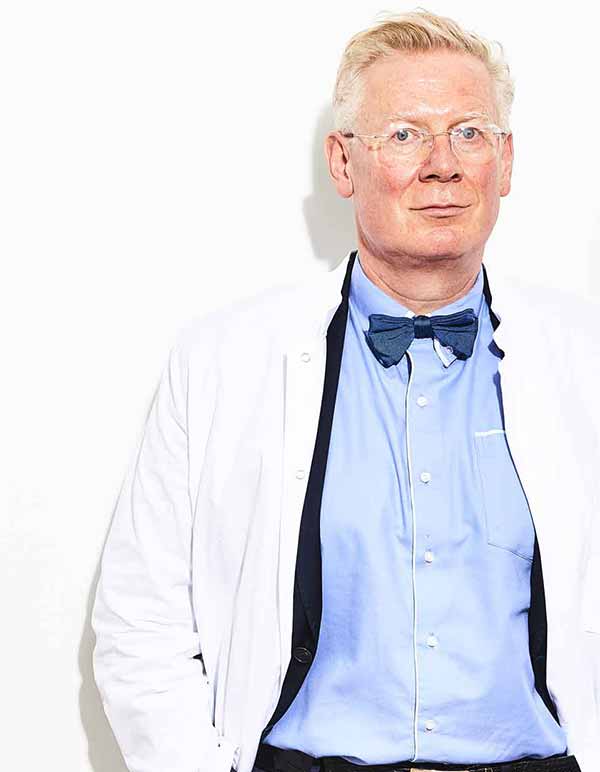“When it comes to our skincare, we are not traditional beauty developers; we have decades of scientific research behind our products.”
For years, the big-name beauty industry players have followed a standard formula—launch a product a huge advertising budget, big claims, and a celebrity face. The formulators behind the products have been largely been anonymous, with the weight of marketing being supported by the brand’s reputation. However, over the past few years, thanks to more informed consumers, social media, and a buyers’ wanting the most value from their products—doctor-formulated brands have become one of the most popular segments of the market.
With the global skincare industry pumping out over $135 billion in revenue and expected to increase 30% by 2025, there is a lot of money at stake. It appears that having doctors develop science-backed formulas is giving consumers additional confidence that the products they are buying might actually deliver results. In fact, one of the most editor-hyped products of recent years wasn’t developed by a big name beauty brand, but by the Director and Professor of Applied Stem Cell Biology and Cell Technology at the University of Leipzig in Germany Augustinus Bader. The brand has taken off, with sales leaping from $24 million to $70 million in 2020.
To get a snapshot into how doctor-designed brands stand out, I interviewed the founders of three popular brands. Not surprisingly, each one of the brands also has a larger mission. Former emergency room doctor Sarah Villafranco, MD started her natural skincare line Osmia to have a positive impact on human and environmental health. While Professor Bader is using money from his skincare line to fund research and development for those affected by severe burns and skin wounds. Dermatologist Dr. Macrene Alexiades launched MACRENE actives with the goal to ultimately replace cosmetic procedures with skincare that achieves the same results.

Founder: Professor Augustinus Bader
Brand: Augustinus Bader
Sara Bliss: What initially drew you to your research on how skin heals and regenerates?
Professor Bader: I spent time working with burn victims at the Ruijin Hospital in Shanghai. I was quite impacted by my experiences in China and was motivated to create a therapy to help treat children with severe and disfiguring burns.
Bliss: Did you ever envision yourself creating a skincare product?
Professor Bader: At the time, I’d only ever worked in a medical or academic setting and I had never imagined that I might create a skincare product for consumers. It was sort of by accident that I came into skincare, but it's with a purpose.
Bliss: What propelled you to start your brand?
Professor Bader: The reason we launched the skincare brand was to provide a platform to allow for the continued research and development of treatments that alleviate suffering for those afflicted by severe burns and wounds. We have created a circular process—the research allows the commercial activity to be disruptive and competitive—and in turn, the skincare activity will finance the research.
Bliss: How has your career in medicine and your experience as a scientist informed the brand?
Professor Bader: When it comes to our skincare, we are not traditional beauty developers; we have decades of scientific research behind our products. My approach to skincare focuses primarily on respecting, first and foremost, human skin physiology and skin health and we will only release products that bring a real solution to our customers. It’s about maintaining the highest efficacy levels while viewing the long-term goal of better overall skin health. In this respect, we are pioneers in our niche.
Bliss: It took two years for you to be convinced to launch a skincare product. When did you decide it was something you wanted to do and why?
Professor Bader: It was Charles Rosier, my partner in this enterprise, who had the vision to apply the technology to skincare consumer products in order to fund my research. He thought if the technology could turn burned skin into perfect skin, then the know-how could be used to develop an innovative skincare to help with wrinkles. At the time, the idea did not wholly convince me, but I started to prototype a skincare product with certain patients with problematic or fragile skin. The creams made a real difference to the people, and they kept coming back asking for more. After two years of Charles’ perseverance, I finally understood this potential to apply this knowledge of intrinsic stem cell communication to develop a skincare-approved product.
Learn more about our Founder here.
Read the full article at Forbes.com

